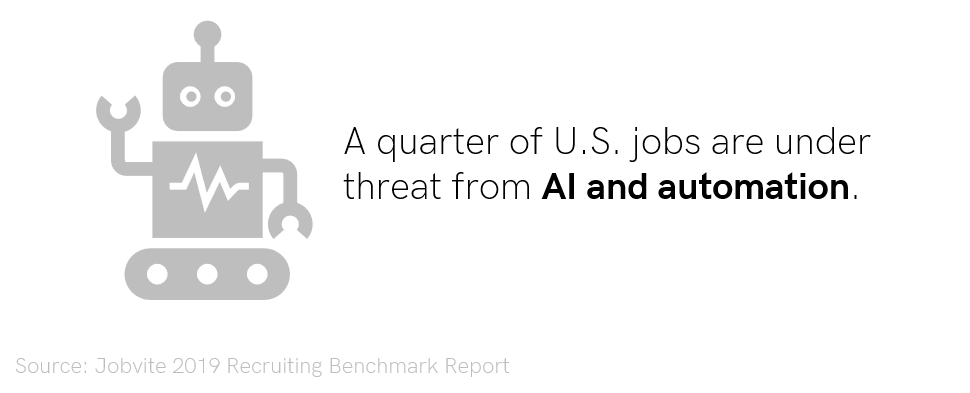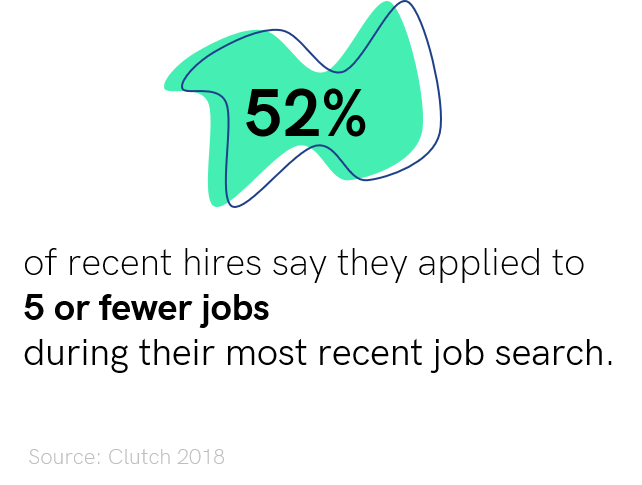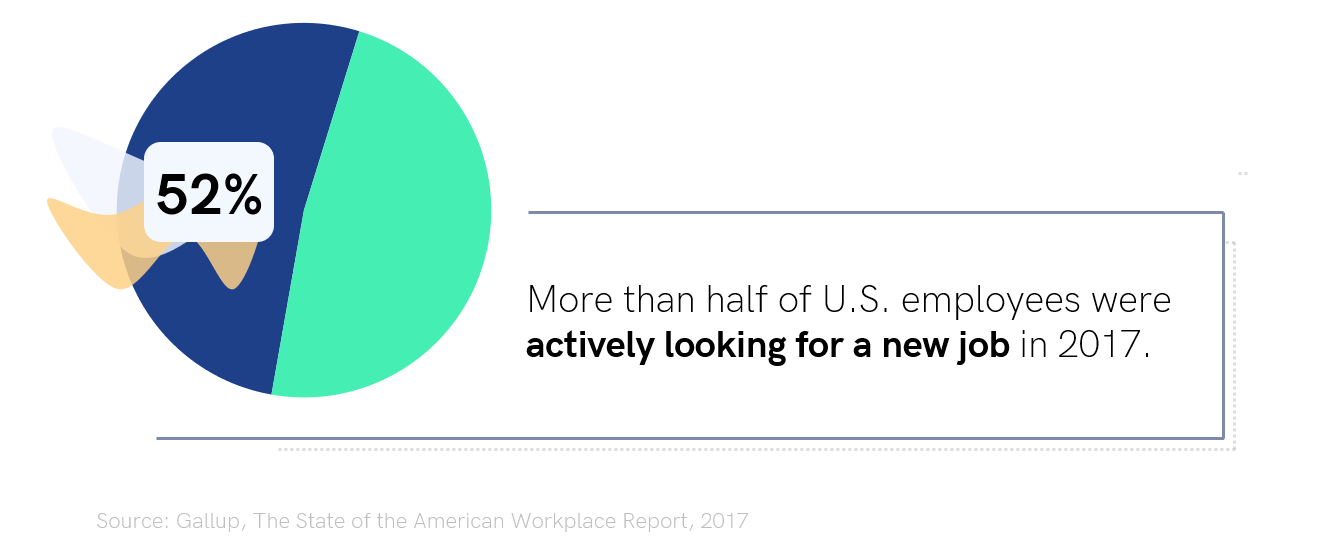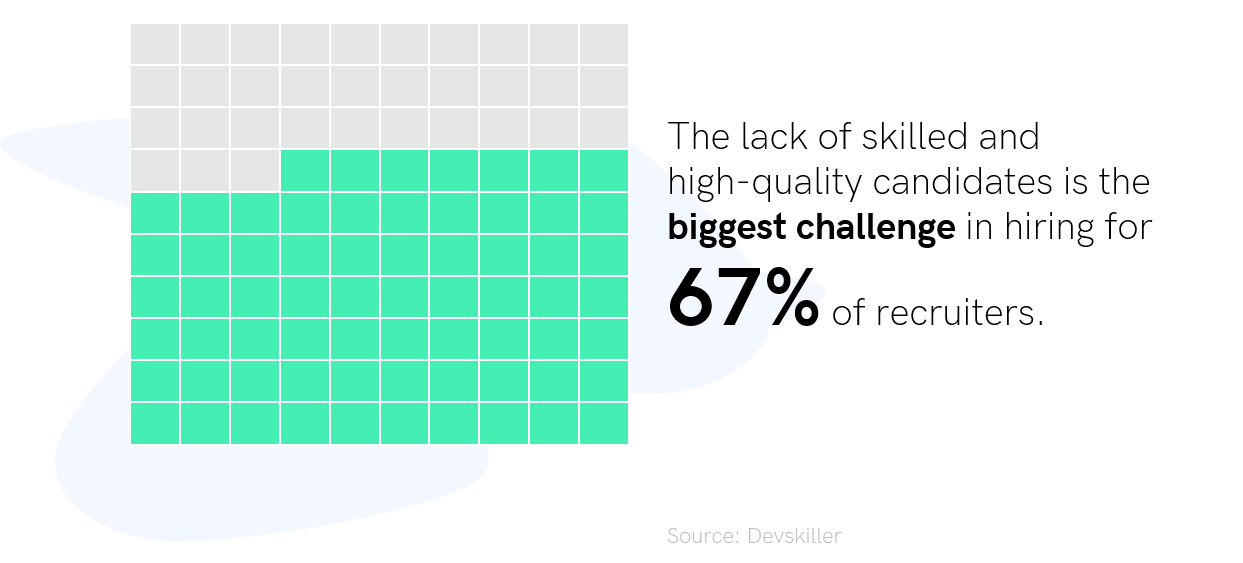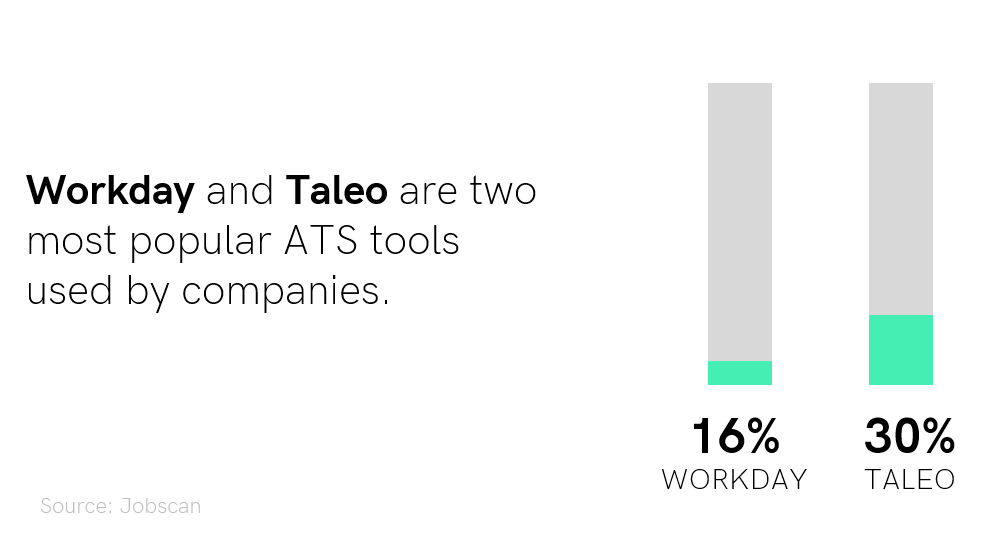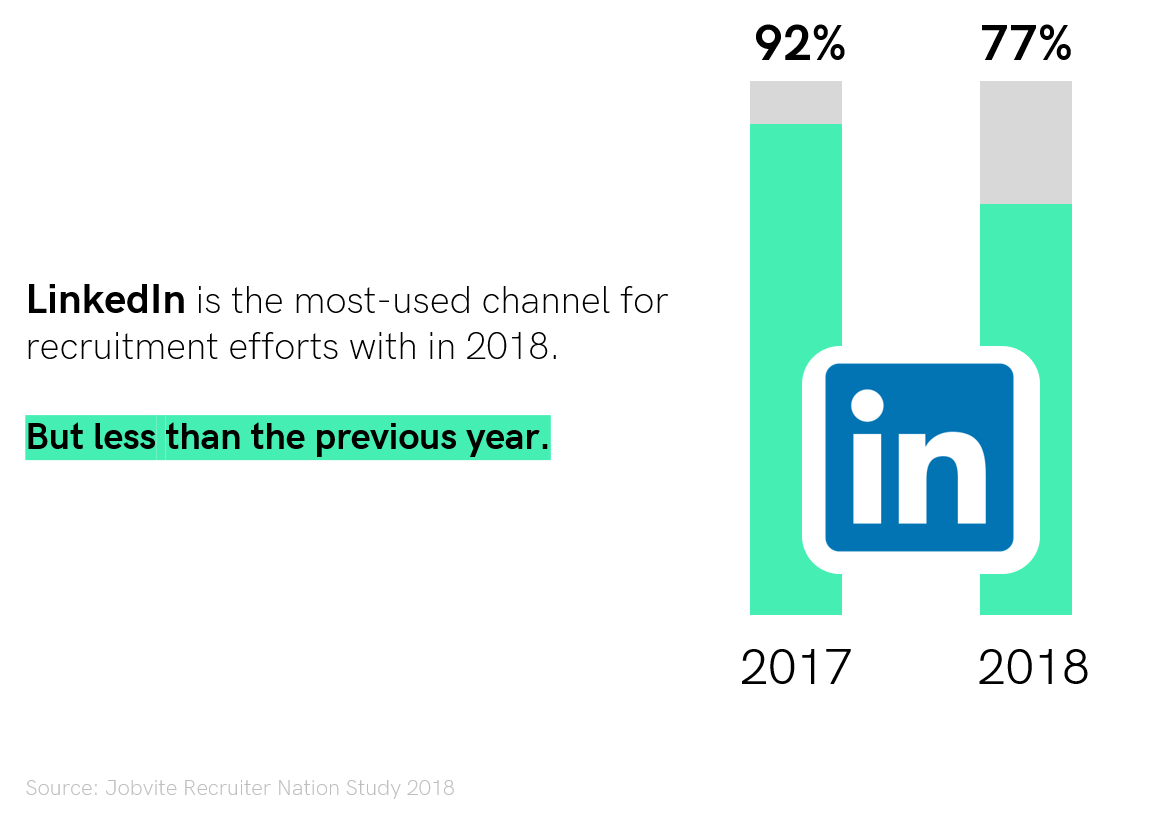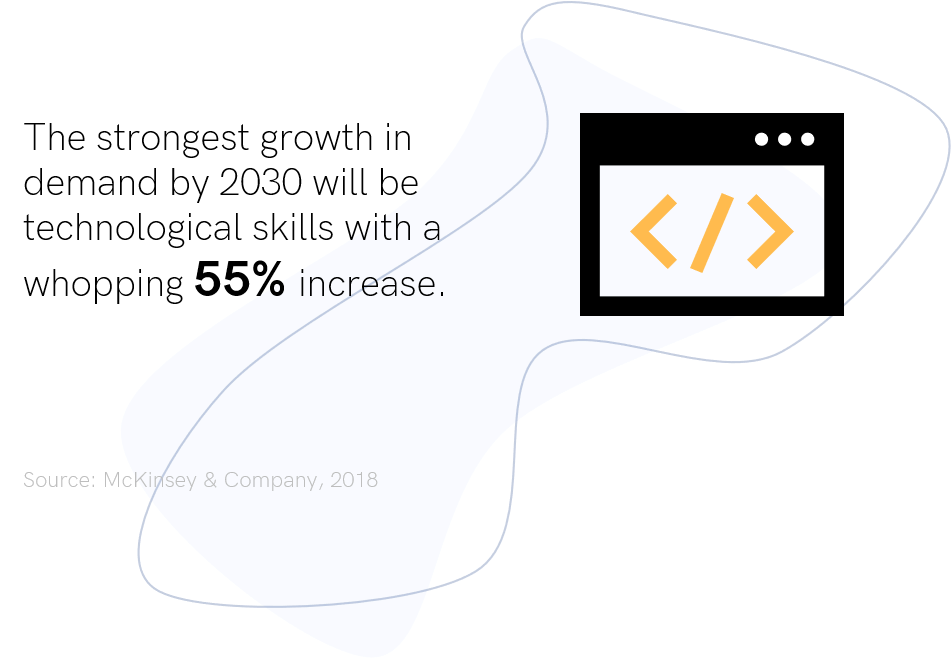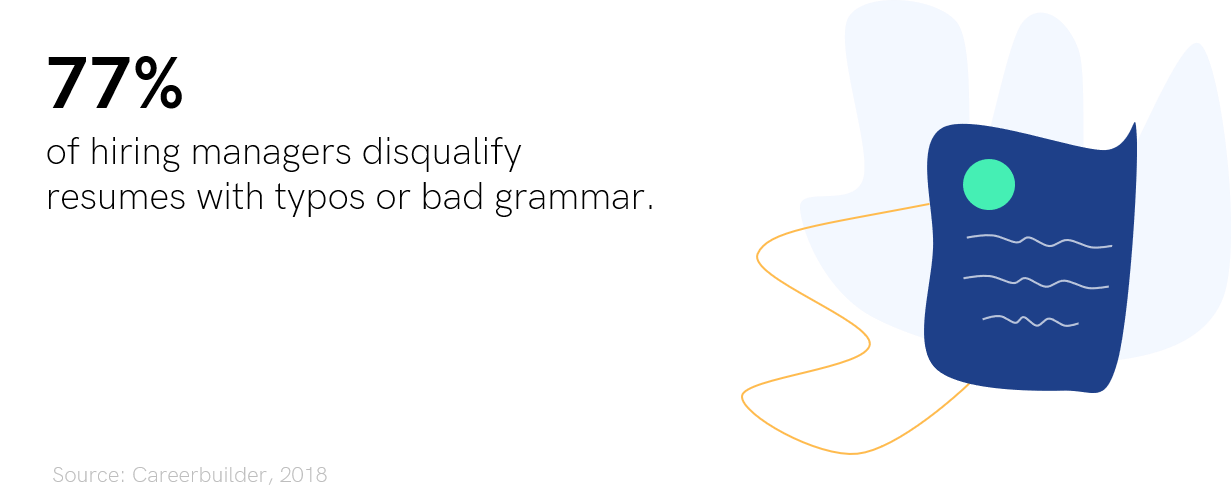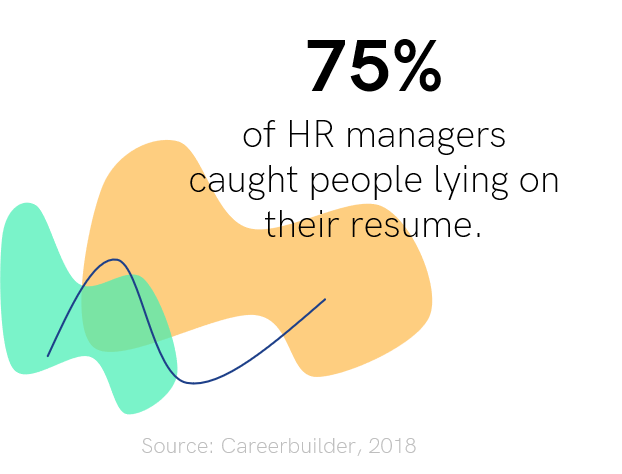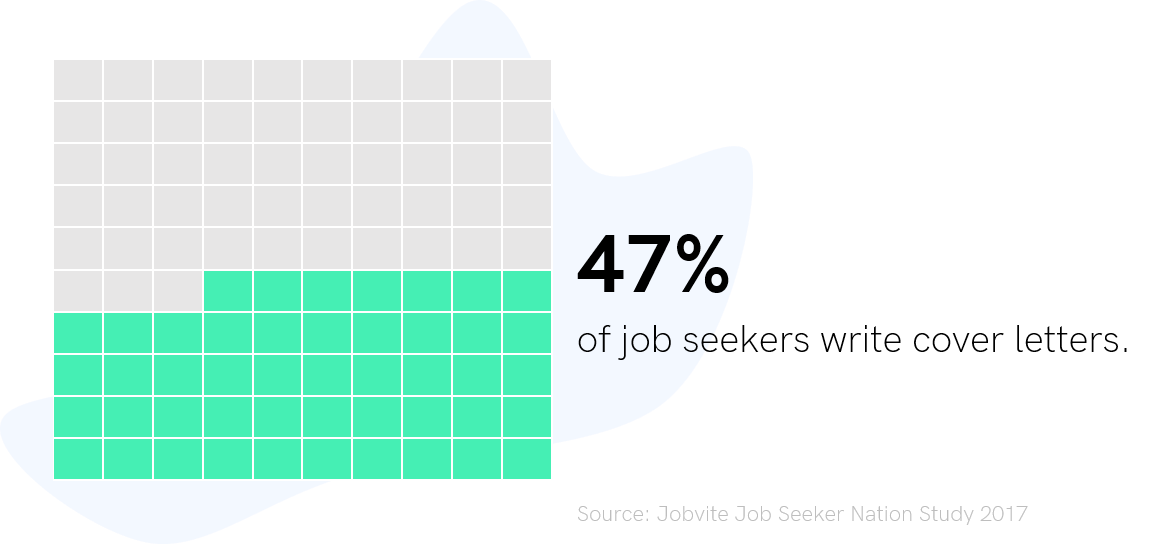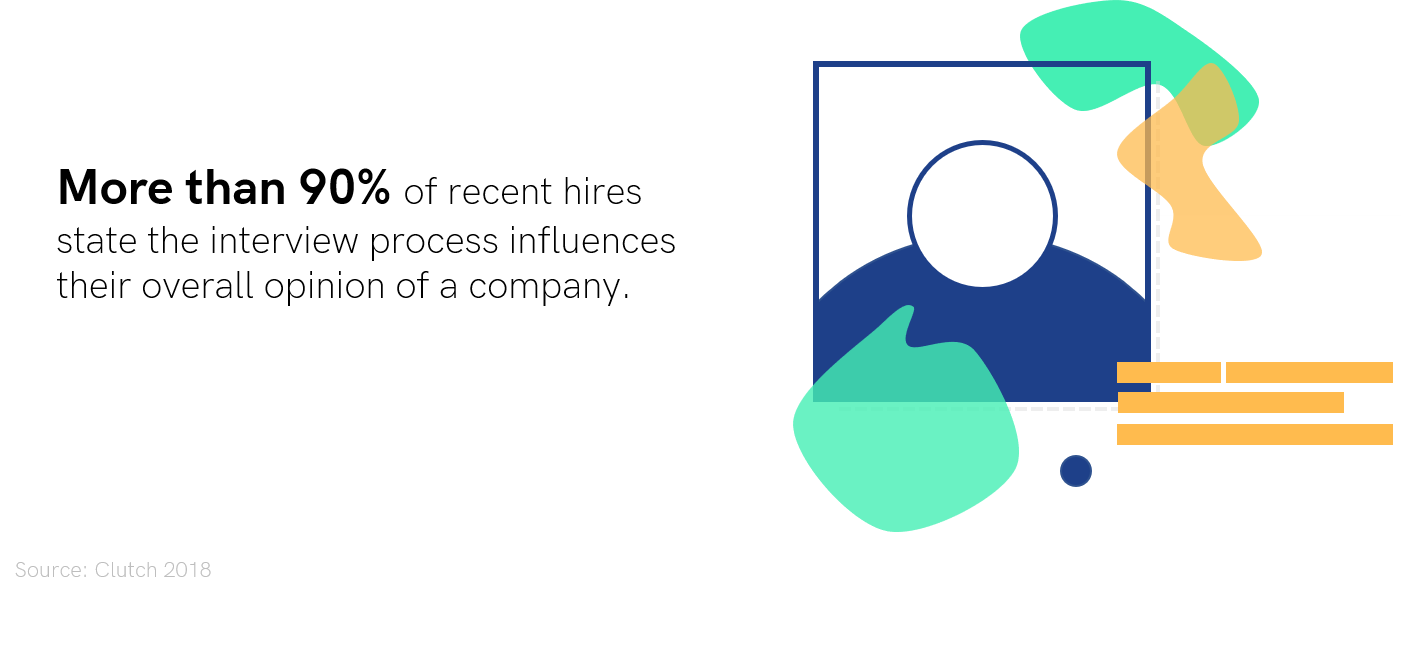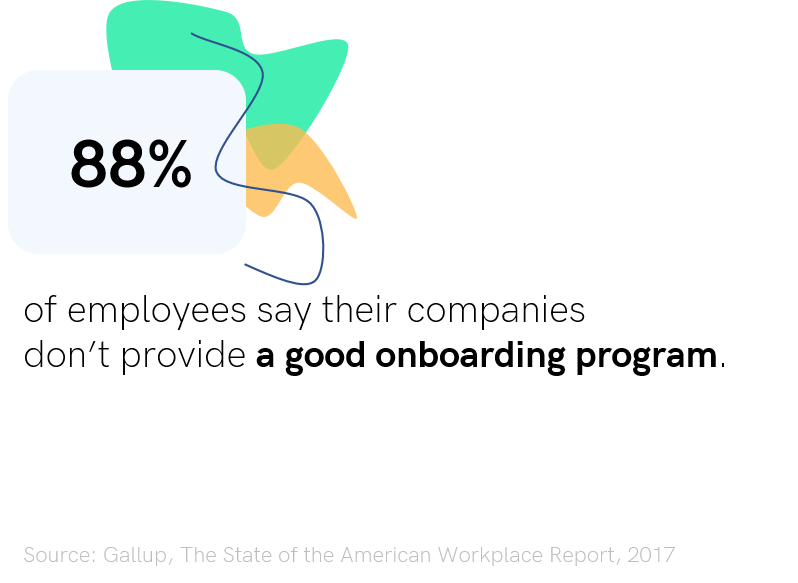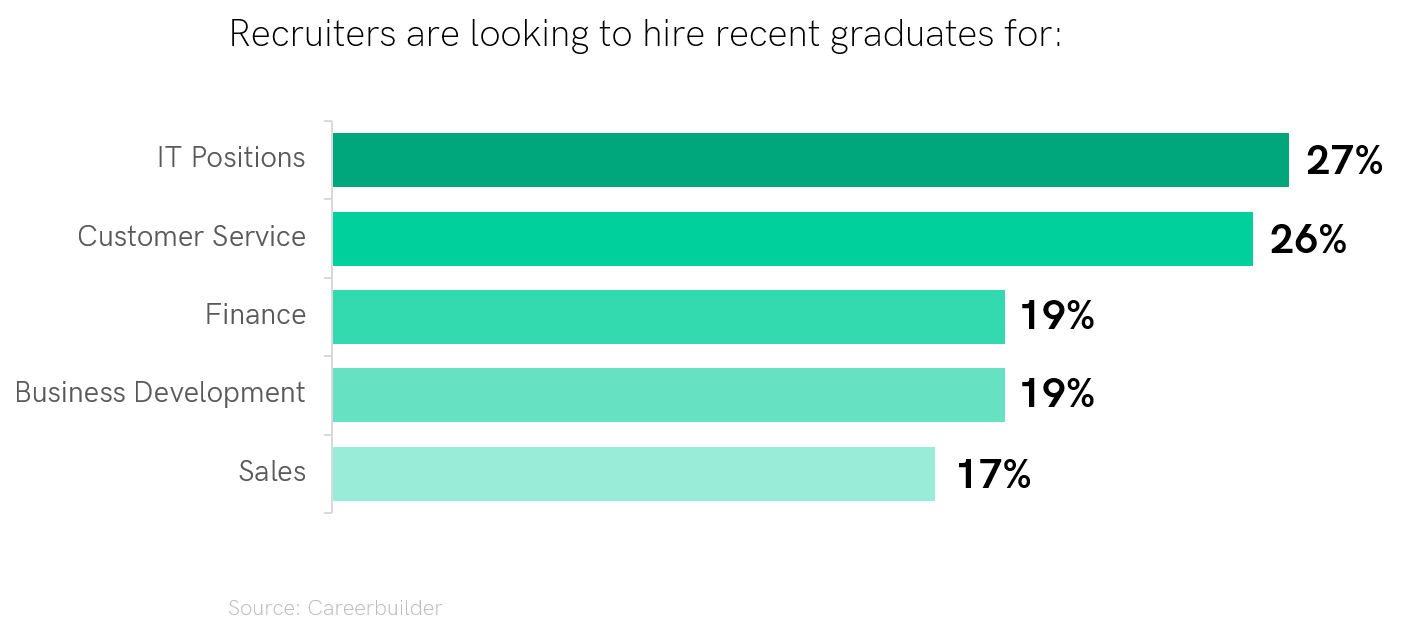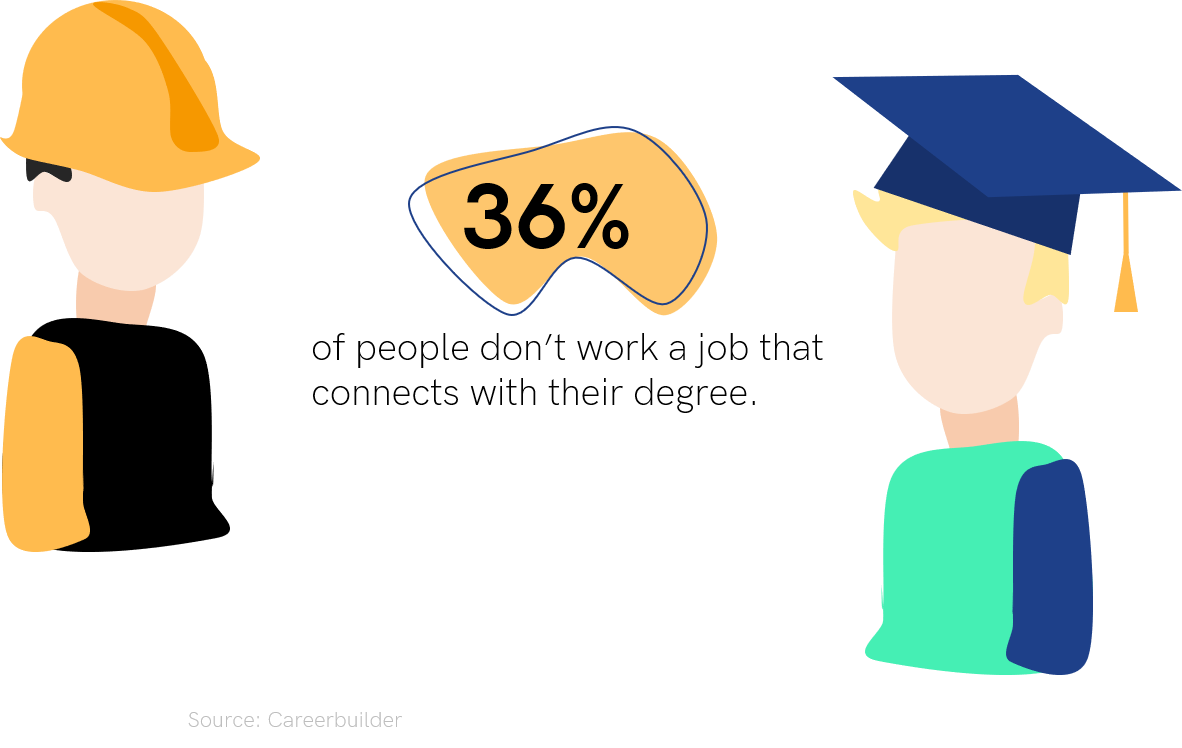An HR professional or job candidate is in a tough position—
You need to apply data-driven methods to find the best talent or land your dream job.
But—what hiring and recruiting statistics give you the best picture of today’s job search landscape?
Worse—how do you find them when there’s just too much market data?
And when you do—are they objective? Will they help you improve your hiring process or job hunt?
These are the pressing concerns we’ve seen over and over with HR professionals and job candidates.
The good news? We did the research for you.
Whether you’re a recruiter or a job seeker, you’ll find here the most up-to-date human resource statistics for 2020. These stats will form the way you hire people—or how to apply for jobs in a targeted way.
In this guide, you’ll find:
- A comprehensive list of 2020’s hiring and recruitment statistics.
- A glimpse into recent HR developments and trends of 2020 and beyond.
- A curated list of statistics on resumes and cover letters to help you perfect yours.
Before we dive into the numbers, let’s start with a general macroeconomic overview of where we are in 2020 and what it means for hiring practices.
What Factors Impact Recruitment and Job Search in 2020?
The one stat every HR professional and job candidate should know:
- The unemployment rate in the US hit an all-time low since 1969: a staggeringly low 3.5% in September 2019.
(US Bureau of Labor Statistics)
That’s right. The last time the unemployment rate was so low, the first man walked on the moon. It’s safe to say it’s a job seeker’s market in today’s economy, right? This stat would seem so:
- In July 2018, there were 6.3 million unemployed persons versus 6.9 million open jobs.
(US Bureau of Labor Statistics)
But—the BLS definition combines part-time and temporary workers with full-time workers. The Jobvite 2019 Recruiting Benchmark Report highlights this worry, stating there has been a 42% increase in the number of ‘involuntary’ workers.
And, as unemployment lowers, ‘real wages’ point out how the gig economy is much to blame. In addition,the role of AI and automation are also a major threat in the next years, leading to increased unemployment:
- A quarter of U.S. jobs are under threat from AI and automation: those jobs listed as “highly exposed” to automation total 36 million current American jobs.
(Jobvite 2019 Recruiting Benchmark Report)

The bottom line—current numbers paint an optimistic picture of the job market, but it’s forecasted to quickly change. Let’s take a look at what this means for today’s job search and the trends moving forward.
Job Search Statistics Now—And Into the Future
- 58% of recent hires say their latest job search lasted 2 months or less.
(Clutch 2018)
- 52% of recent hires say they applied to 5 or fewer jobs during their most recent job search.
(Clutch 2018)

- 19% of recent hires only applied to their current job during their recent search.
(Clutch 2018)
- In 2018, 12% of candidates applied for jobs and got an interview. 28% of those interviewed left with a job offer.
(Jobvite 2019 Recruiting Benchmark Report)
Those are great numbers. But remember—it’s based on a record low of unemployment we haven’t seen in 50 years. And it’s been an on-going trend since 2012:
- In a five year span (2012–2017), Americans grew increasingly confident they would find a quality job (from 19% to 42%.)
(Gallup, The State of the American Workplace Report, 2017)
This confidence comes at a time when more than half of U.S. employees were actively looking for a new job or on the lookout for openings in 2017 (Gallup, The State of the American Workplace Report, 2017.)

How do these numbers fare in 2019 and beyond?
- In the next 12 months, recruiters forecast hiring will become more competitive.
(Jobvite Recruiter Nation Study 2018)
- The number of filled positions will decrease at this time, according to recruiters.
(Jobvite Recruiter Nation Study 2018)
With fewer positions, increased competitiveness, and the perils of automation and AI, recruiters need to be smarter in their hiring processes. Job candidates need to know what resume mistakes will land them in the reject pile. Our curated compilation of stats will show you this.
What Are the Most Important Recruiting Stats for 2020?
To gain a competitive edge in the industry, whether you’re an HR professional or a job candidate, you need to know the numbers behind recruiting to improve your processes.
The Burdens of Recruitment Today
- Talent acquisition professionals spend more than 30% of their workweek sourcing candidates for one position. One-third of these professionals spend over 20 hours.
(Entelo, Recruiting Trends Report 2018)
- The largest bottleneck in recruiting is working with hiring managers. 50% of recruiters see problems in moving candidates through the hiring process, while 44% cite hiring managers reviewing resumes as reasons for slowing the process down.
(Jobvite Recruiter Nation Study 2018)
- The lack of skilled and high-quality candidates is the biggest challenge in hiring for 67% of recruiters.
(Devskiller)

- 78% of candidates are not enthusiastic about “computers making hiring decisions.” 21% are “extremely worried” and 67% are worried.
(Pew Research Center, 2017)
- The average U.S. company spends $4,000 to hire a new employee.
(Glassdoor, HR and Recruiting Stats for 2019)
- The busiest hiring months are between April–June.
(Entelo, 2018 Recruiting Trends Report)
Automation and AI in Recruiting
- In 2018, 91% of tech companies planned to invest in sourcing tools and technology.
(Entelo 2018 Recruiting Trends Report)
- AI-powered recruiting tools will be part of the budget for 64% of talent acquisition professionals in 2019
(Entelo 2018 Recruiting Trends Report)
- Workday (16%) and Taleo (30%) are two popular ATS tools used by companies.
(Jobscan)

Interestingly, the push for AI-powered recruiting tools isn’t well-known to job candidates:
- More than half of Americans (57%) know “nothing at all” about the use of algorithms for hiring decisions by companies, but 59% think it makes realistic sense
(Pew Research Center, 2017.)
Where Recruiters Turn to Hire
- LinkedIn is the most-used channel for recruitment efforts with 77% in 2018. But this is a 15% decrease from 2017 (92%.)
(Jobvite Recruiter Nation Study 2018)

- 47% of recruiters will build brand awareness and source candidates on social media. 21% will do so through a company career website while 12% will do so through marketing and advertising.
(Jobvite Recruiter Nation Study 2018)
- Over 50% of recruiters will reach out to candidates via email. 30% will reach out via LinkedIn InMail.
(Entelo, 2018 Recruiting Trends Report)
- 25% of recruiters are investing in recruiting efforts on Instagram. 35% of millennial recruiters will do so in 2018, and 63% of recruiters in the tech industry will do the same—doubling the previous year.
(Jobvite Recruiter Nation Study 2018)
2019 Recruitment Trends
- 92% of talent professionals say soft skills matter as much or more than hard skills when they hire.
(Global Talent Trends, LinkedIn 2019)
- 75% of recruiters say Glassdoor reviews are important to the hiring process. Company culture does help for hiring.
(Jobvite Recruiter Nation Study 2018)
- The strongest growth in demand by 2030 will be technological skills (such as programming) with a whopping 55% increase.
(McKinsey & Company, 2018)

- 57% of companies struggle to assess soft skills accurately.
(Global Talent Trends, LinkedIn 2019)
- 53% of talent professionals believe pay transparency is extremely important for the future of recruiting.
(LinkedIn Global Recruiting Trends 2019)
- 80% of recruiters say their company has implemented harassment prevention action in the last 12 months or will do.
(LinkedIn Global Recruiting Trends 2019)
- 72% of talent professionals say workplace flexibility is important for recruiting.
(LinkedIn Global Recruiting Trends 2019)
Resume & Cover Letter Statistics
If you’re looking for a job, with competition on the rise for 2019 and beyond, you need to avoid the common pitfalls when writing a resume or cover letter for a position. Here are some of the most important resume & cover letter stats for you to keep in mind when crafting your application documents.
Resume Statistics
- The average job opening attracts 250 resumes.
(Glassdoor, HR and Recruiting Stats for 2019)
- 77% of hiring managers disqualify resumes with typos or bad grammar.
(Careerbuilder 2018)

- 82% of employers will seek proof of solid written communication skills on a candidate’s resume, so presenting a well-written resume is a must-have.
(NACE Job Outlook 2019)
- 60% of HR managers look to see whether you resume is well-written.
(Careerbuilder 2018)
- 35% of employers will reject your resume if it has an unprofessional email address
(Careerbuilder 2018)
- 34% of hiring managers want to see quantifiable results on your resume.
(Careerbuilder 2018)
- 39% of HR managers spend less than a minute initially looking at a resume. 19% spend less than 30 seconds.
(Careerbuilder 2018)
- 75% of HR managers caught people lying on their resume.
(Careerbuilder 2018)

- 60 percent of HR managers pay attention to whether their resume has been customized to their open position.
(Careerbuilder 2018)
Cover Letter Statistics
- 26% of recruiters read cover letters and consider them an important part of decision-making when hiring a candidate.
(Jobvite Job Seeker Nation Study 2017)
- 49% of HR managers believe a cover letter is the second best aspect of boosting your resume.
(Careerbuilder)
- 47% of job seekers write cover letters.
(Jobvite Job Seeker Nation Study 2017)

The key takeaway—your cover letter matters as a second best option, but tailoring your resume is the most important aspect of your application documents.
Job Interview Statistics
Here are some of the most important job interview statistics that every job candidate needs to know:
- The average interview process takes 22.9 days.
(Glassdoor, HR and Recruiting Stats for 2019)
- For one job opening, only 2% of applicants will be called in for an interview.
(Glassdoor, HR and Recruiting Stats for 2019)
- If employers cannot find a candidate online, 41% would not call them in for an interview.
(Careerbuilder 2018)
- The most common way for recruiters to assess candidate’s soft skills is:
- Behavioral questions—75%
- Reading body language—70%
- Situation questions—58%
(Global Talent Trends, LinkedIn 2019)
- More than 90% of recent hires state the interview process influences their overall opinion of a company.
(Clutch 2018)

- Only 12% of HR managers will call a candidate who does something unusual or outrageous before an interview.
(Careerbuilder 2018)
In a recruitment process now and need to know how long it takes to get an offer? Here’s are estimates given by recruiters:
- 5–6 weeks—35%
- 3–4 weeks—31%
- 7–8 weeks—23%
- 1–2 weeks—8%
- 9+ weeks—3%
(2017 Recruiter Sentiment Study MRI Network)
Workplace Trends in 2020
Trends are continuing in the workplace for 2019—
Here are some of the key statistics to show you what the future of hiring and job hunting will be:
- By 2025, millennials will make up 75% of the global workforce.
(Deloitte Global Millennial Survey 2019)
- Flexibility in the workplace offers a new way to create work-life balance. Since 2016, there has been a 78% increase in job posts on LinkedIn that mention work flexibility.
(LinkedIn Global Recruiting Trends 2019)
- Women (36%) cite flexibility more so than men (29%) as a very important value in the workplace.
(LinkedIn Global Recruiting Trends 2019)
- 43% of new hires quit after being hired because it wasn’t what they were expecting, necessitating strong onboarding for companies.
(Jobvite 2019)
- 88% of employees say their companies don’t prove a good onboarding program.
(Gallup, The State of the American Workplace Report, 2017)

- 61% of new hires get no training on company culture.
(TalentLMS, 2019)
- 67% of candidates want to join a diverse team of different ethnicities and ages.
(Glassdoor, HR and Recruiting Stats for 2019)
Students and Recent Graduate Statistics
Finally, the last set of statistics is targeted towards students and recent graduates who are entering the workforce.
- Recruiters are looking to hire recent graduates for:
- IT Positions—27%
- Customer Service—26%
- Finance—19%
- Business Development—19%
- Sales—17%
(Careerbuilder)

- Candidates with the following majors are sought out by recruiters:
- Business—35%
- Computer and Information Sciences—23%
- Engineering—18%
- Math and Statistics—15%
- Health Professionals and Related Clinical Sciences—14%
- Communications Technologies—11%
- Engineering Technologies—11%
- Communication and Journalism—8%
- Liberal Arts and Sciences, General Studies, and Humanities—7%
- Science Technologies—7%
- Social Sciences—6%
- Biological and Biomedical Sciences—6%
- Architecture and Planning—6%
- Education—5%
(Careerbuilder)
- GPA matters depending on the industry—chemical manufacturing, computer and electronics manufacturing—screen their job candidates by GPA
(NACE Job Outlook 2019)
- For most industries, the GPA cutoff is 3.0 (finance, chemical manufacturing, information, etc.)
(NACE Job Outlook 2019)
- 36% of people don’t work a job that connects with their degree.
(Careerbuilder)

- Attributes employers look for:
- Completed an internship with your organization—4.6/5 (extreme influence)
- Internship experience in your industry (4.5/5)
- Major 4.0/5
(NACE Job Outlook 2019)
- Top traits or skills employers look for:
- Critical thinking/problem-solving (4.66/5)
- Teamwork/collaboration (4.48/5)
- Professionalism/Work Ethic (4.41/5)
- Oral/Written Communications (4.3/5)
(NACE Job Outlook 2019)
- 20% of employers believe new graduates are not yet prepared for the workforce.
(Careerbuilder)

- The top missing skills recruiters blame most are:
- Book Learning Over Real-world Learning—47%
- No Blend of Technical and Liberal Arts Skills—39%
- Not Prepared for the Complexity of Entry-level Roles—25%
- No Focus on Internships—13%
- Are Up-to-date with Technology Changes—13%
- Wrong Degree—11%
(Careerbuilder)
Key Takeaway
So—there you have it.
A curated list of the most important hiring and recruiting statistics, tailored to show you the ones most impactful for your career.
Now that you’ve seen some of our hand-picked stats, you know what’s most important to you.
You might not have known how competitive the market will be beyond 2020, but the statistics back it up.
If you’re a recruiter, you better understand the workplace trends, and how you might need to change your hiring processes.
If you’re a job seeker, you know you’ll have to take more time on customizing your resume and cover letter to outscore other candidates.
Need more career advice? Check out the free resources below:
If you’ve come across other job, HR, workplace, or resume statistics that we didn’t mention—or want to see other ones—let us know in the comments below.
About Us
At ResumeLab, our mission is to share expert knowledge and tools to help you find your dream job. On our website, you will learn what's the best resume format, how to write our resume, or find job-specific resume examples.
You'll also be able to use our resume maker and cover letter creator to make your job application in just a few minutes with expert tips and advice.
![How to Network in College [10+ Networking Tips for Students]](https://cdn-images.resumelab.com/pages/how_to_network_in_college_listing.jpg)



